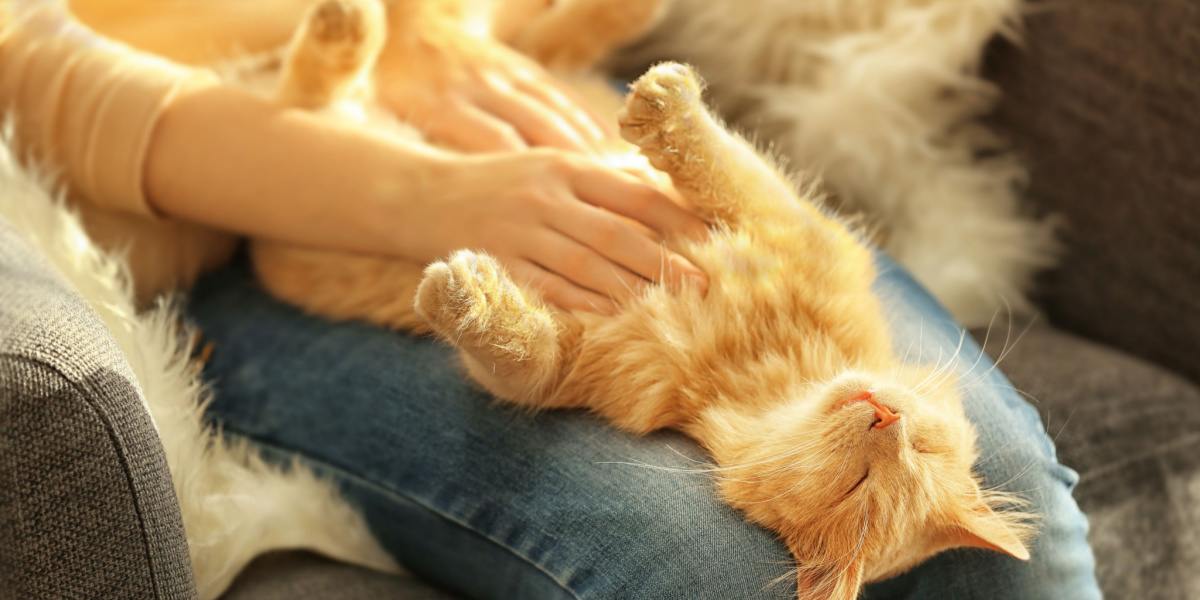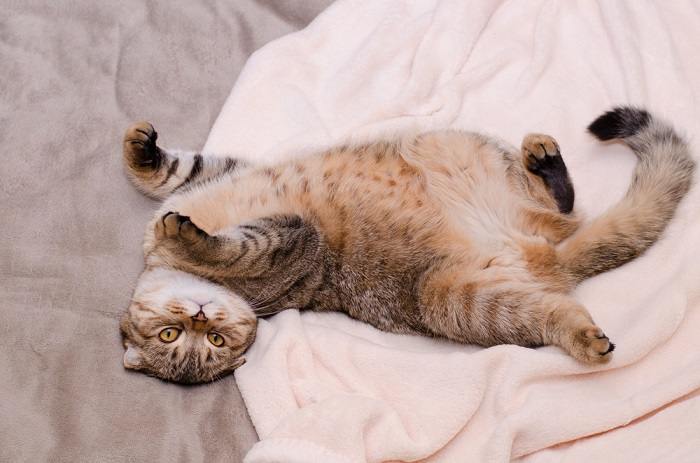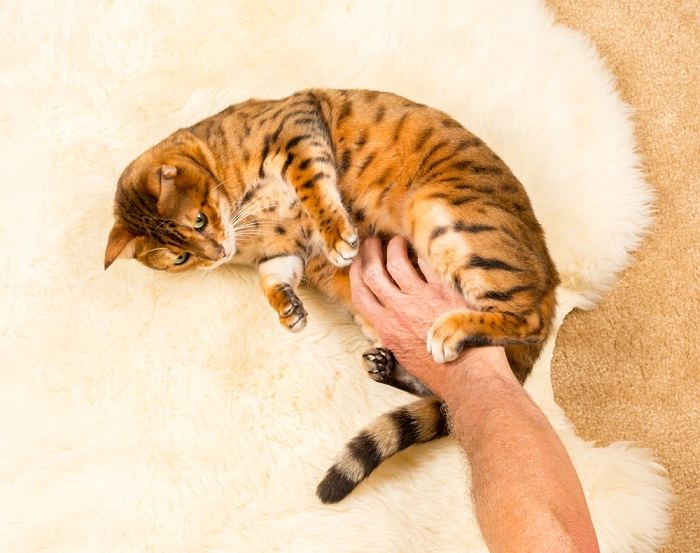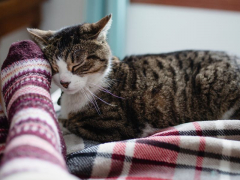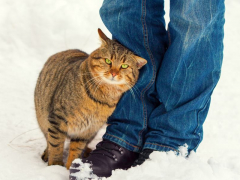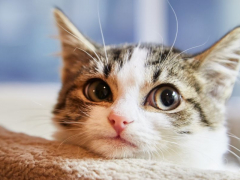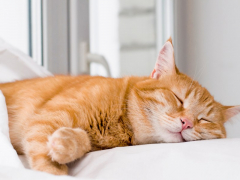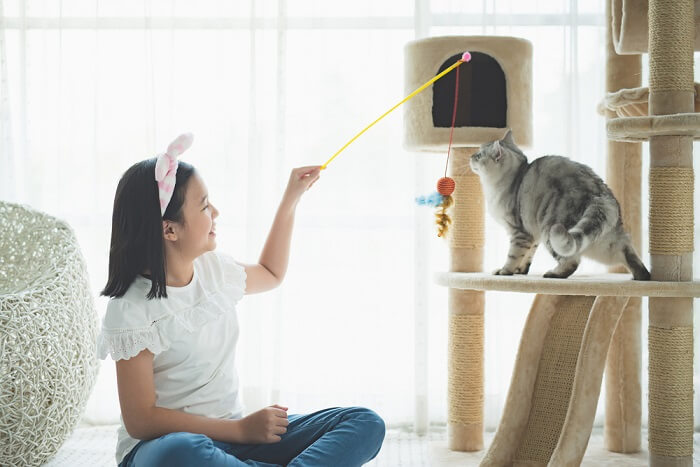It’s a common trap that most cat owners have fallen into at least once: Your cat rolls over and invitingly displays their fluffy belly, so of course, you reach down to oblige with tummy rubs, only to encounter teeth and claws!
Everyone’s preferences change sometimes, and your cat’s likes and dislikes are no exception. But why do so many cats hate belly rubs? There’s actually a good reason why your cat might find this attempted sign of affection not to their liking. Cats have very sensitive hair follicles on their bellies, and the belly is also a very vulnerable area.
Many cats dislike belly rubs because the abdomen is a vulnerable area and cats have very sensitive hair follicles on their bellies. Most cats respond instinctively with claws or teeth if you try to stroke their belly.
Some cats will tolerate belly rubs, but it's best to pet cats around their cheeks and chin and along their back.Key Takeaways
Understanding more about these facts can help us understand why our cat’s behavior can change so quickly when we just want to give them a little tickle, and how to approach the cat belly rub if you want to succeed.
Reasons Why Cats Don’t Like Belly Rubs
Modern cats revel in domesticity, enjoying all the advantages that come with a loving home, including a full food bowl and comfortable beds. However, the natural instinct of their ancestors is still strong.
Ancient wild cats were both hunters and prey, fiercely defending territory and communicating with other cats via posture, facial expression, body language, and scent marking. A domestic cat will retain many of these behavioral adaptations, whether or not they are now needed.
1. Sensitive Hair Follicles
Cats are agile and graceful creatures, displaying a wonderful sense of spatial awareness as they explore their environment. This increased sensitivity to their immediate surroundings is partly due to super sensitive hair follicles found on their stomach and tails.
This is a great adaptation for hunting out in the wild. These hairs ensure your cat is always aware of what is around them, and that your cat’s body is always exactly where they want it to be.
However, this also means that a cat’s belly and tail are very sensitive to touch, and what seems like a gentle stroke to us can be very overstimulating to a cat. The rush of sensation when you stroke a cat’s stomach can lead them to snap instantly into defensive mode, purely on instinct. They might automatically scratch or bite in an endeavor to escape the strange feeling.
2. Protecting Vital Organs
Many of a cat’s most vital organs, such as their liver, kidneys, and intestines, are found within their belly. When their stomach is exposed, therefore, their tolerance to any perceived threat is very low. A hand reaching down toward this vulnerable area might trigger an instinctive defensive response, even if they know that you are trustworthy.
Why Do Cats Lie on Their Backs?
A cat’s body language can be very confusing if you don’t happen to actually be a cat. Why would a cat lie on its back and expose its belly in an apparent invitation if they don’t want you to stroke it? This does seem a little unfair! As it turns out, there are some good reasons, including the following:
1. A Good Stretch
If you see your cat lying on their back, they are not necessarily asking for belly rubs.
A cat lying on their back with their belly exposed might simply be enjoying a good stretch and sunbathing. Cats like to stay warm, and exposing their belly to the sunshine helps maintain body temperature. Cats are also super flexible and giving their spines a good stretch helps maintain their agility.
It is also not uncommon to see a pregnant cat lying on their backs, a position that helps to relieve the internal pressure of pregnancy. Exposing their tummy is not necessarily an invitation to their owners, they’re just cats going about their usual business!
2. A Defensive Posture
When a cat lies on its back, it is indeed exposing a vulnerable area, but it is also ready for action. From this position, a cat can choose their weapon of choice if attacked: all claws and teeth are ready and able to be used immediately to protect them. Cats might take up this posture when feeling threatened, but they don’t want to flee.
Can I Teach My Cat to Like Belly Rubs?
Many cats don’t tolerate belly rubs well. Usually, the best way to pet a cat is a gentle rub around the chin and cheeks—these areas contain scent glands that help a cat mark you as trustworthy, safe, and familiar. If your cat isn’t keen on a tummy rub, it’s usually best not to push it, but respect their preferences.
If you really want to stroke that soft belly fur, start very slowly. Approach your cat slowly and calmly when they are lying on their backs and seem relaxed. Sit quietly beside them, and give them some slow blinks as you wait for them to relax again—this is the feline equivalent of saying, “I love you.”
Begin by gently touching a front paw, and over time, their back paws, and then the tummy. Take this process slowly over a few weeks, and give lots of treats as a reward if they tolerate the touch well.
Disliking belly rubs is a perfectly normal behavior in cats, but if your cat dislikes any touch at all, this might be a cause for concern. They might be in pain, feeling unwell, or stressed. If your cat reacts negatively to any form of petting, especially if they suddenly become averse to their usual interactions, take them for a checkup with a veterinarian.
If medical conditions are ruled out, most veterinarians will be able to refer you on to an animal behaviorist to work on any stresses or anxieties your cat might have about touch.
Final Thoughts
If you have a sensitive cat, pet them on less sensitive areas, such as the head and chin.
Cats are mysterious creatures, and it can often seem like they are giving mixed signals. When a cat exposes their belly to you, this is most likely not an invitation to stroke it, rather an opportunity for them to stretch out in the warm, or a defensive posture if feeling threatened.
Giving a cat a belly rub might end in disaster, as their tummy hair is super sensitive and touching it often leads to an instinctual reaction to protect their vulnerable abdomen. The safest course of action is to stick to your cat’s preferred petting areas, usually the cheeks, head, and back.
Also Read: Do Cats Have Feelings For Their Owners?
Frequently Asked Questions
How do I know if my cat's stomach hurts?
Cats with stomach pain will often be very quiet and hide away. They might stop eating, and have vomiting or diarrhea. They might cry or whimper, and might adopt an odd posture to try and relieve discomfort, such as stretching out with their front end down and back end up in the air.
How do you get a cat to let you touch their belly?
Cats often don’t like their tummies touched as they have very sensitive hair there, and it is a vulnerable area. If you really want to stroke their belly, take it very slowly, sit with them quietly first and try touching a paw before you stroke their tummy.
Is it okay to touch a cat's belly?
Many cats dislike a belly rub, as they have very sensitive hair follicles there, and the abdomen is a vulnerable area. Some cats will tolerate it, but with most kitties, you are best to stick to petting them around their cheeks and chin and along their back.
What do cats feel when you rub their belly?
Cats have very sensitive hair follicles on the belly, so probably find it very stimulating when you rub the hair there. Most cats will respond negatively on instinct, with claws or teeth, as they dislike the sensation.
